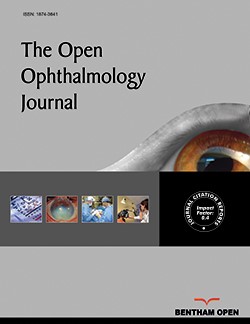All published articles of this journal are available on ScienceDirect.
Characteristics of Dry Eye Syndrome in Patients with Mild Graves’ Ophthalmopathy
Abstract
Introduction
This study aimed to assess dry eye in patients with mild Graves’ Ophthalmopathy (GO) at Vietnam National Eye Hospital.
Materials and Methods
This cross-sectional descriptive study evaluated dry eye syndrome in 40 eyes from 20 mild Graves’ ophthalmopathy patients from January 2021 to December 2021 at the Vietnam National Eye Hospital. As an age-matched control group, 44 eyes of 22 adults without thyroid disease were selected. The Ocular Surface Disease Index (OSDI), Tear Break-up Time (TBUT), Schirmer I tear test, and Corneal Fluorescein Staining (CFS) were assessed.
Results
The results showed that dry eye in patients with mild GO disease was significantly higher (65%), i.e., 3.98 times compared to the control group (65% and 30%, p<0.001, OR=3.98). The mean Schirmer I tear test score, TBUT score, CFS score, and OSDI score had a significant difference between GO and controls. Dry eye indices (TBUT, Schirmer I test, CFS) in mild GO patients were linearly correlated with proptosis, Margin-to-reflex Distance 1 (MRD1), and Clinical Activity Score (CAS). In the group of patients with active GO, the results of TBUT, Schirmer I test, CFS, and OSDI were statistically significantly higher than the inactive group (p < 0.05). Dry eye in the inflammatory group was 5.14 times higher than the non-inflammatory group (85.7% vs. 53.8%, p< 0.001, OR = 5.14).
Conclusion
Dry eye syndrome was frequently found in patients with mild GO, 3.98 times higher than the control group. Dry eye findings and the ocular surface damage in GO were severe in the group with active mild GO and 5.14 times higher than the inactive group.


